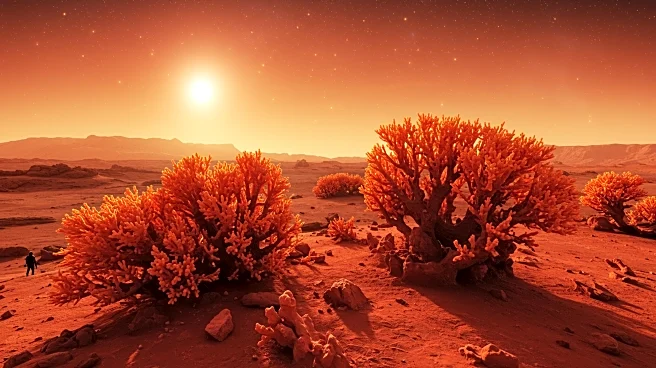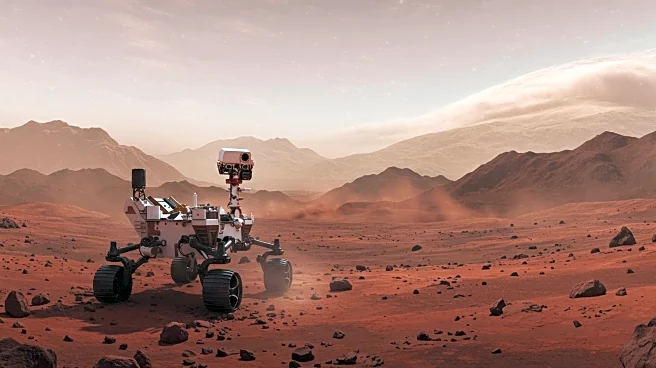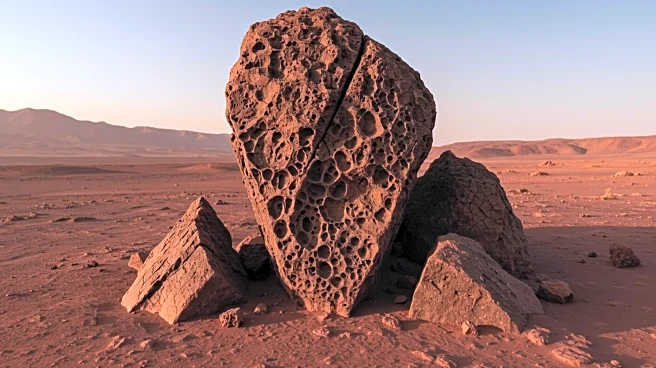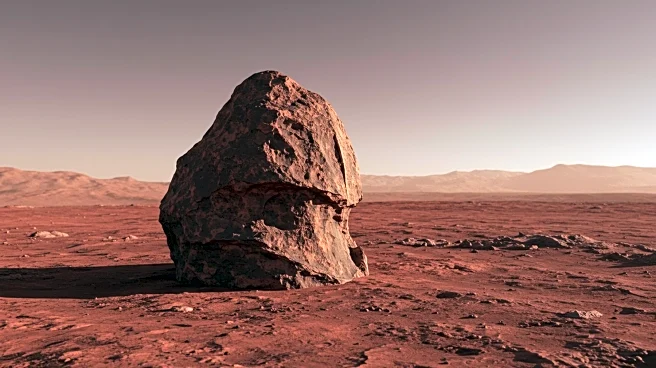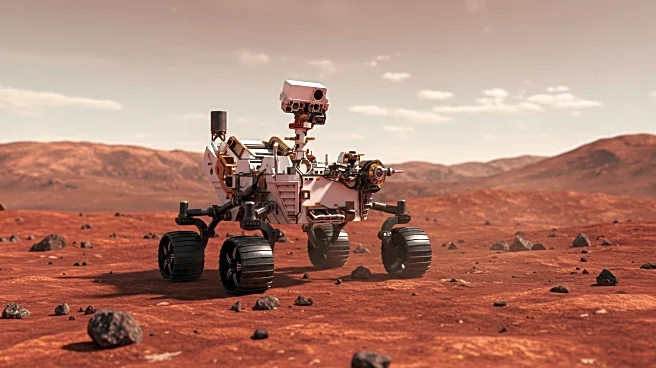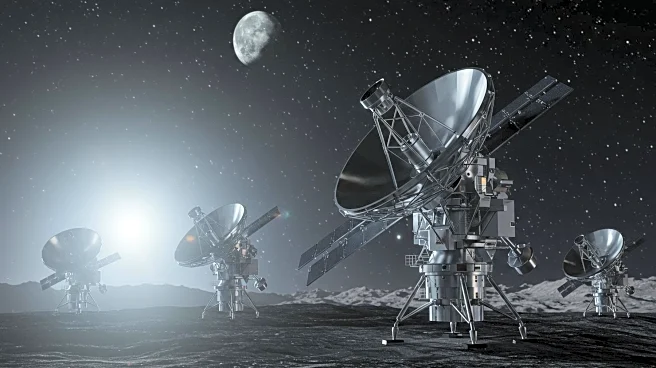What's Happening?
NASA's Curiosity rover has identified unusual rock formations in Gale Crater on Mars that resemble fossilized coral. These formations, imaged on July 24, 2025, are believed to be shaped by Martian winds over eons. The rocks, named Paposo and Punta De Lobos, are not evidence of past life but provide insights into Mars' geological history. Similar formations have been observed before, where minerals deposited by ancient water were eroded by wind, creating unique shapes.
Why It's Important?
The discovery of coral-like rock formations on Mars is significant for understanding the planet's geological and environmental history. It highlights the role of wind erosion in shaping Martian landscapes and offers clues about past water activity. While not indicative of life, these formations contribute to the broader scientific narrative of Mars as a once potentially habitable environment. Such findings are crucial for future exploration and the search for signs of life.
Beyond the Headlines
These formations underscore the complexity of Martian geology and the challenges in interpreting signs of past life. They illustrate the importance of continued exploration and the need for advanced technology to analyze Martian rocks. The findings may influence future missions and the development of instruments capable of detecting more subtle signs of life.
